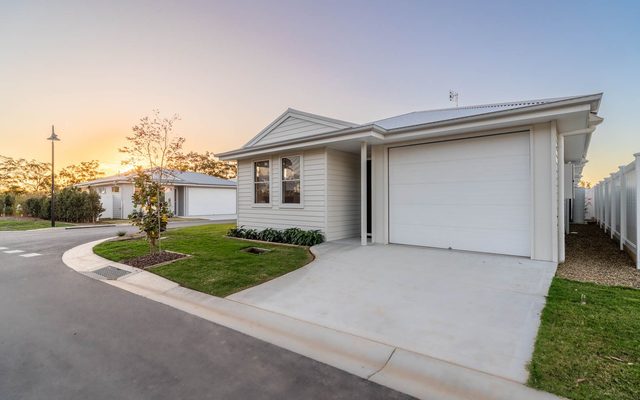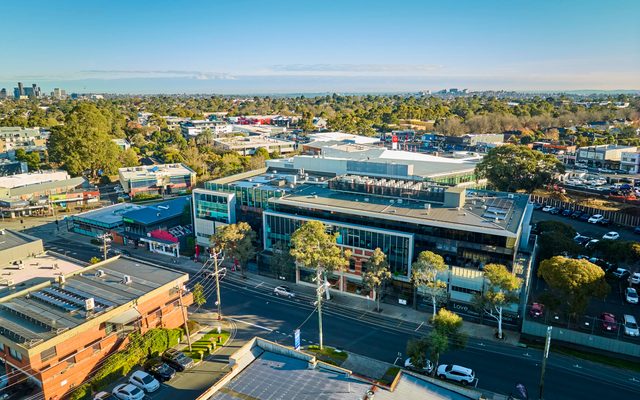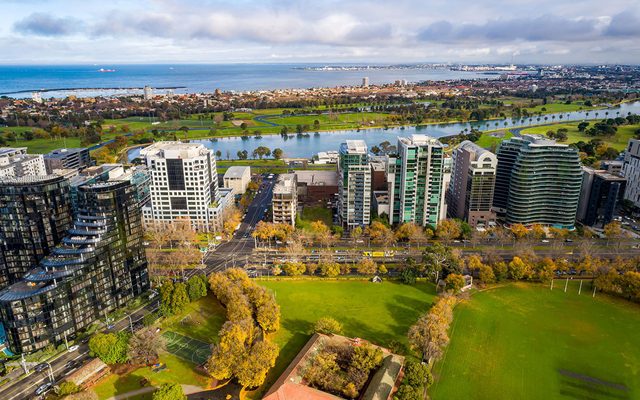This article is from the Australian Property Journal archive
DEXUS Property Group (ASX: DXS) wants to be Australia's top office property player under the new leadership of Darren Steinberg, who has made the bold move to exit the United States, reversing Victor Hoog Antink's decision to enter the market two years ago.
Dexus was recently awarded the Australian Property Institute’s Ernst and Young Joe Curlewis Property Trust Industry Award for outperforming the A-REITs sector over past one, three and five years and has been a standout performer in the wholesale unlisted sector over one, two and three years. Dexus has delivered total security holder return of 12.2% for the year ended 30 June 2012.
Yesterday Dexus’ new CEO Darren Steinberg said the wheels are already in motion to turn the group into the major office property owner with the acquisitions of 50 Carrington St Sydney for $58.5 million (excluding acquisition costs) or $5,180 per sqm, representing a cap rate of 8.0%, from the Retail Employees Superannuation Trust.
The 15-level building provides 10,920 sqm of office space and 372 sqm of ground floor retail space. It is currently 61.3% leased and has a weighted average lease expiry (WALE) of 2.2 years and a 3.0 star NABERS Energy rating.
Dexus and the Dexus Wholesale Property Fund (DWPF) has also jointly bought an office building at 12 Creek St Brisbane for $241.6 million (excluding acquisition costs) from Australian Property Growth Fund, on a cap rate of 7.75%.
Known as the ‘Blue Tower’ the 34-level property comprises 32,227 sqm of prime A-Grade office space and is located in the heart of Brisbane Golden Triangle. The property is currently 94.6% leased, has a WALE of 4.5 years and has a 2.5 star NABERS Energy rating and a 4.0 star NABERS Water rating. The property has been acquired and is expected to settle on 31 October 2012.
Steinberg said the acquisitions are in line with Dexus’ revised strategy of increasing investment in Australian office.
“Dexus’ revised strategy is focused on the delivery of superior risk-adjusted returns for investors, through investment in high quality Australian real estate, primarily comprising CBD office buildings. The group will achieve this by being the leading owner and manager of Australian office.
“The strategic review identified that the group’s offshore exposure is considered non-core and Dexus will concentrate on its core Australian office and industrial markets.
“As a consequence of the strategic review the US industrial residual portfolio is deemed non-core and an exit strategy will be progressed over the next 12 to 24 months,” he added.
Dexus currently owns and manages 24 industrial properties in the west coast and three land parcels in Texas valued at $US549.5 million.
Dexus also announced a venture with the South Korea’s National Pension Service to co-invest $A360 million in 13 industrial properties in Australia. The partnership has the potential to more than double in the next five years.
The group yesterday reported a statutory net profit after tax of $181.1 million for the year ended 30 June 2012, compared to $553.0 million for the prior year. The lower result is due to unrealised mark-to-market movements in hedging contracts as a result of lower market interest rates, lower revaluation gains in FY2012 compared to FY2011 and the transaction costs associated with the sale of the US central portfolio.
The group’s funds from operations increased 2.7% from $358 million to $367.8 million for the year. The group will pay a total distribution per security of 5.35 cents up from 5.18 cents in FY2012.
Despite the sound FFO results, Dexus’ share prices fell 2.5 cents or 2.5% yesterday to close at 97 cents.
The weighted average cost of funds reduced by 50bps from 6.6% to 6.1% and the average duration of debt was maintained at 4.2 years at 30 June 2012. Gearing was 27.2%, well below the group’s target range of 30-40%.
Looking ahead, Steinberg said the Australian office markets are expected to experience cyclically slow tenant demand in FY2013, improving in FY2014, driven by increased business confidence and the positive influence of lower interest rates on employment growth.
In Sydney, tenant demand for space remains subdued and he anticipates that this will continue for the next 18 months with incentives expected to remain elevated. Supply will remain below average over the next two years, rising to above average levels in 2015-2016 as the first office buildings in the Barangaroo precinct are completed.
“As with any significant new addition to supply, the development at Barangaroo will contribute to a more competitive leasing market. However, we believe that Dexus’ office exposure in the western corridor will benefit from the additional infrastructure and amenities that will be created for the project and its surroundings. Furthermore, as the development is pitched at higher than average rents, there will be a flow-on benefit to quality properties in the area, including Dexus’ 30 The Bond and 1 Margaret St Sydney properties, with likely increased rents and valuations as a result.
“In Melbourne, tenant demand has weakened and is expected to remain subdued over the next 12 months, due to low levels of employment growth. Adding to this is the ongoing construction of significant new supply, which is likely to result in vacancy rates rising in FY2014. The availability of backfill space is expected to keep incentives elevated, which may result in new projects being delayed until the next cycle,” he continued.
“In Brisbane, tenant demand is expected to ease off the highs of last year but remain positive, due to continued employment growth driven in part by the resources and business service sectors. There is little new supply under construction at present, so the market vacancy rate should tighten further in FY2013.
“In Perth, although tenant demand is expected to weaken from the current strong levels due to lower commodity prices and slowing resource investment, it should still remain positive. A lack of new supply in the next two years will result in the market vacancy rate remaining low until FY2015 at which point new supply may begin to enter the market,” Steinberg said.
In the industrial market, demand for prime industrial space has been subdued and is expected to continue in FY2013, but conditions are expected to improve in FY2014.
“In Sydney, there is a declining trend in vacant prime space in key sub-markets, mainly due to a supply of new industrial space remaining below the 10-year average. In some areas the supply of quality prime space is unlikely to satisfy the expected demand, resulting in a level of speculative development in some areas.
“In Melbourne, although take-up has been below the 10 year average over the last few years the major markets continue to have low levels of supply. Consequently, the level of prime space available for lease in key sub-markets has declined. Conditions are expected to be subdued in FY13 before improving in line with economic activity,”
“In Brisbane, take up has been mainly through renewals rather than pre-lease activity. Market vacancy for existing prime space is falling, due to below average levels of new supply throughout the market. Supply is constrained for larger industrial facilities, which is resulting in some speculative development.
“Barring unforeseen changes to operating conditions, our guidance9 for earnings or FFO for the year ending 30 June 2013 is 7.75 cents per security, a 1.3% increase over FY2012 and a like-for-like increase of 5.2% excluding the sale of the US central portfolio. As a result of our revised payout policy we are targeting a payout ratio of 75% for FY13, and distributions are expected to grow 8.4% to 5.8 cents per security for the year ending 30 June 2013,” he concluded.
Property Review



